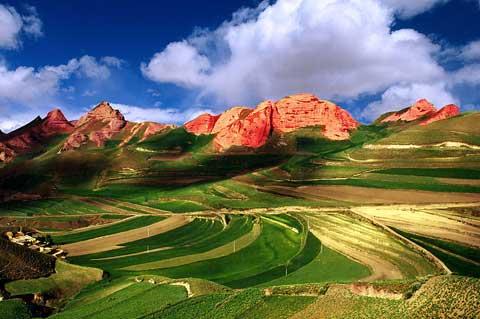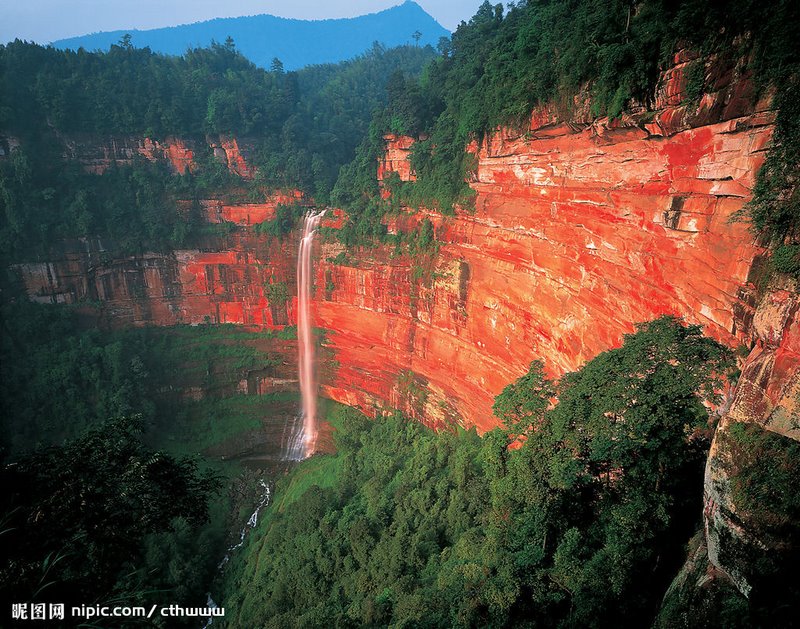This is a sight that will really send a shiver down your spine. Not because it's scary - but because of its sheer beauty. The caves are so cold it sends a shiver down the spine of people standing outside.
The caves are, like many interesting corners of China, not yet on any tourist trail, but are spectacular to visit. Situated in the middle of the Yellow River valley, in the heart of one of China's most scenic regions, these incredible ice caves are more than three million years old. Identified by the Chinese Academy of Sciences Institute of Geology, cave expert on-site inspection: this hole is formed in the Cenozoic Quaternary Ice Age, hence the name of years the ice cave.
The experts said that only the first of nine ice cave in the ice cave ranked the country more than 10,000 caves. Divided into upper and lower five-story drill ice cave, under the ice stairs, over ice stack, available layers sightseeing. Each floor can accommodate dozens of people. Over 20 meters in diameter, the hole at its widest point, the narrowest of over 10 meters. Formed by the ice, icicles, ice curtain, frozen waterfalls, ice, ice Buddha, ice sheets, ice bell, Iceman, ice Buddha, etc., strange, to name a few. Carved inside the cave, large and small views or exquisite, dazzling crystal, or graceful, magnificent, all amazing.
Photos shows an ancient ice cave in Ningwu County of Xinzhou City, north China's Shanxi Province, 50 km west of the Wa township Ma Tei Village Office next to the travel lanes, 2300 meters above sea level. The cave, lit up by coloured lights, is more than 100 meters long. Inside it is covered with thick ice that freezes in the winter and remains all year.
Huge icicles are formed which hang from the ceiling, in sharp contrast with the green summer foliage outside.
They're so chilly that even standing outside you can feel the cold - even on a hot summer's day.
The caves are, like many interesting corners of China, not yet on any tourist trail, but are spectacular to visit. Situated in the middle of the Yellow River valley, in the heart of one of China's most scenic regions, these incredible ice caves are more than three million years old. Identified by the Chinese Academy of Sciences Institute of Geology, cave expert on-site inspection: this hole is formed in the Cenozoic Quaternary Ice Age, hence the name of years the ice cave.
The experts said that only the first of nine ice cave in the ice cave ranked the country more than 10,000 caves. Divided into upper and lower five-story drill ice cave, under the ice stairs, over ice stack, available layers sightseeing. Each floor can accommodate dozens of people. Over 20 meters in diameter, the hole at its widest point, the narrowest of over 10 meters. Formed by the ice, icicles, ice curtain, frozen waterfalls, ice, ice Buddha, ice sheets, ice bell, Iceman, ice Buddha, etc., strange, to name a few. Carved inside the cave, large and small views or exquisite, dazzling crystal, or graceful, magnificent, all amazing.
Photos shows an ancient ice cave in Ningwu County of Xinzhou City, north China's Shanxi Province, 50 km west of the Wa township Ma Tei Village Office next to the travel lanes, 2300 meters above sea level. The cave, lit up by coloured lights, is more than 100 meters long. Inside it is covered with thick ice that freezes in the winter and remains all year.
Huge icicles are formed which hang from the ceiling, in sharp contrast with the green summer foliage outside.
They're so chilly that even standing outside you can feel the cold - even on a hot summer's day.







































































